Related Research Articles
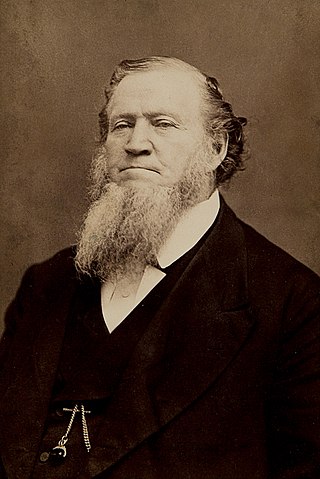
Brigham Young was an American religious leader and politician. He was the second president of the Church of Jesus Christ of Latter-day Saints from 1847 until his death in 1877. During his time as church president, Young led his followers, the Mormon pioneers, west from Nauvoo, Illinois, to the Salt Lake Valley. He founded Salt Lake City and served as the first governor of the Utah Territory. Young also worked to establish the learning institutions that would later become the University of Utah and Brigham Young University. A polygamist, Young had at least 56 wives and 57 children. He formalized the prohibition of black men attaining priesthood, and led the church in the Utah War against the United States.

The Mountain Meadows Massacre was a series of attacks during the Utah War that resulted in the mass murder of at least 120 members of the Baker–Fancher emigrant wagon train. The massacre occurred in the southern Utah Territory at Mountain Meadows, and was perpetrated by settlers from the Church of Jesus Christ of Latter-day Saints involved with the Utah Territorial Militia who recruited and were aided by some Southern Paiute Native Americans. The wagon train, made up mostly of families from Arkansas, was bound for California, traveling on the Old Spanish Trail that passed through the Territory.
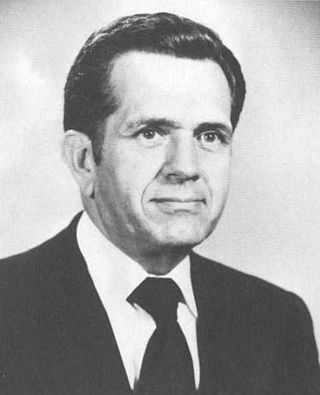
Boyd Kenneth Packer was an American religious leader and educator who served as president of the Quorum of the Twelve Apostles of the Church of Jesus Christ of Latter-day Saints from 2008 until his death. He also served as the quorum's acting president from 1994 to 2008 and was an apostle and member of the Quorum of the Twelve from 1970 until his death. He served as a general authority of the church from 1961 until his death.

Mormon cinema usually refers to films with themes relevant to members of the Church of Jesus Christ of Latter-day Saints. The term has also been used to refer to films that do not necessarily reflect Mormon themes but have been made by Mormon filmmakers. Films within the realm of Mormon cinema may be distinguished from institutional films produced by the LDS Church, such as Legacy and Testaments, which are made for instructional or proselyting purposes and are non-commercial. Mormon cinema is produced mainly for the purposes of entertainment and potential financial success.

The Hawn’s Mill Massacre occurred on October 30, 1838, when a mob/militia unit from Livingston County, Missouri, attacked a Mormon settlement in eastern Caldwell County, Missouri, after the Battle of Crooked River. By far the bloodiest event in the 1838 Mormon War in Missouri, it has long been remembered by the members of the Latter Day Saint movement. While the spelling "Haun" is common when referring to the massacre or the mill where it occurred, the mill's owner used the spelling "Hawn" in legal documents.
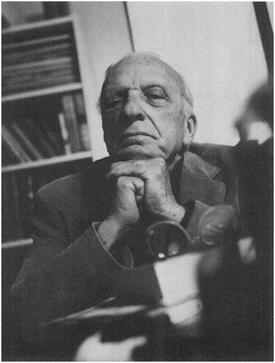
Philip Yordan was an American screenwriter, film producer, novelist and playwright. He was a three-time Academy Award nominee, winning Best Story for Broken Lance (1951).
Merrill Boyd Jenson is an American composer and arranger who has composed film scores for over thirty films including Emma Smith: My Story, Joseph Smith: Prophet of the Restoration, The Testaments of One Fold and One Shepherd, Legacy, Harry's War, and Windwalker. Many of the films Jenson composed music for were directed by Academy Award-winning director Kieth Merrill. Jenson has also composed several concert productions including a symphony that premiered at Carnegie Hall. Additionally, he has composed music for many television commercials including the acclaimed Homefront ads, music for three outdoor pageants, and several albums. Jenson lives in Provo, Utah with his wife Betsy Lee Jenson.
Brigham may refer to:
The history of the Latter Day Saint movement includes numerous instances of violence. Mormons faced significant persecution in the early 19th century, including instances of forced displacement and mob violence in Ohio, Missouri, and Illinois. Notably, the founder of Mormonism, Joseph Smith, was shot and killed alongside his brother, Hyrum Smith, in Carthage, Illinois in 1844, while Smith was in jail awaiting trial on charges of treason and inciting a riot.
Although the Mountain Meadows massacre was covered to some extent in the media during the 1850s, its first period of intense nationwide publicity began around 1872. This was after investigators obtained the confession of Philip Klingensmith, a Mormon bishop at the time of the massacre and a private in the Utah militia. National newspapers also covered the John D. Lee trials closely from 1874 to 1876, and his execution in 1877 was widely publicized. The first detailed work using modern historical methods was published in 1950, and the massacre has been the subject of several historical works since that time.
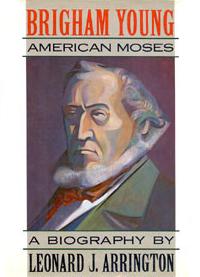
Brigham Young: American Moses is a biography written by Leonard J. Arrington about Brigham Young, a leader in the Latter Day Saint movement and the second president of the Church of Jesus Christ of Latter-day Saints. Alfred A. Knopf published the book in 1985, and reviewers and historians have called it "the definitive Mormon history" and "necessary reading" for understanding Young's life and character.
Mormon theology has long been thought to be one of the causes of the Mountain Meadows Massacre. The victims of the massacre, known as the Baker–Fancher party, were passing through the Utah Territory to California in 1857. For the decade prior the emigrants' arrival, Utah Territory had existed as a theocracy led by Brigham Young. As part of Young's vision of a pre-millennial "Kingdom of God," Young established colonies along the California and Old Spanish Trails, where Mormon officials governed as leaders of church, state, and military. Two of the southernmost establishments were Parowan and Cedar City, led respectively by Stake Presidents William H. Dame and Isaac C. Haight. Haight and Dame were, in addition, the senior regional military leaders of the Mormon militia. During the period just before the massacre, known as the Mormon Reformation, Mormon teachings were dramatic and strident. The religion had undergone a period of intense persecution in the American mid-west.
The Church of Jesus Christ of Latter-day Saints has been subject to criticism and sometimes discrimination since its inception.
Brigham Young University Press was the university press of Brigham Young University (BYU).
Grant Revon Underwood is a historian of the Church of Jesus Christ of Latter-day Saints and a professor at Brigham Young University (BYU). He is also the author of The Millennial World of Early Mormonism and the editor of Voyages of Faith: Explorations in Mormon Pacific History.
The Mailbox is a 1977 American 24-minute short film produced by BYU Motion Picture Studios. The film is available through the Brigham Young University Office of Creative Works on a compilation DVD with other LDS films.
From 1852 to 1978, temple and priesthood policies in the Church of Jesus Christ of Latter-day Saints prohibited both Black women and men from temple ordinances and ordination in the all-male priesthood. In 1978, the church's highest governing body, the First Presidency, declared in the "Official Declaration 2" statement, that the restriction had been lifted. Between 1830 and 1852, a few Black men had been ordained to the Mormon priesthood in the Latter Day Saint movement, under Joseph Smith.

Since Mormonism's foundation, Black people have been members; however, the church placed restrictions on proselytization efforts among Black people. Before 1978, Black membership was small. It has since grown, and in 1997, there were approximately 500,000 Black members of the church, mostly in Africa, Brazil and the Caribbean. Black membership has continued to grow substantially, especially in West Africa, where two temples have been built. By 2018, an estimated 6% of members were Black worldwide. In the United States, approximately 1% of members are Black.
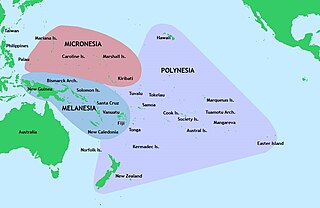
Pacific Islanders have a particular place in the history of the Church of Jesus Christ of Latter-day Saints. Its first non-English-speaking mission was in the region in 1844, less than twenty years after the church's founding, and there are currently six temples among the Pacific Island regions of Polynesia, Melanesia, and Micronesia. In 2015 the Latter-day Saint population in the area was increasing in percentage and absolute numbers.
References
- ↑ "Philip Yordan: The Chameleon. Interview by Pat McGilligan". publishing.cdlib.org. Retrieved December 25, 2014.
- ↑ J. Michael Hunter: Mormons and Popular Culture, Vol. 1. ABC-CLIO, 2012. December 5, 2012. ISBN 9780313391682.
- ↑ "Brigham". Mormon Literature and Creative Arts.